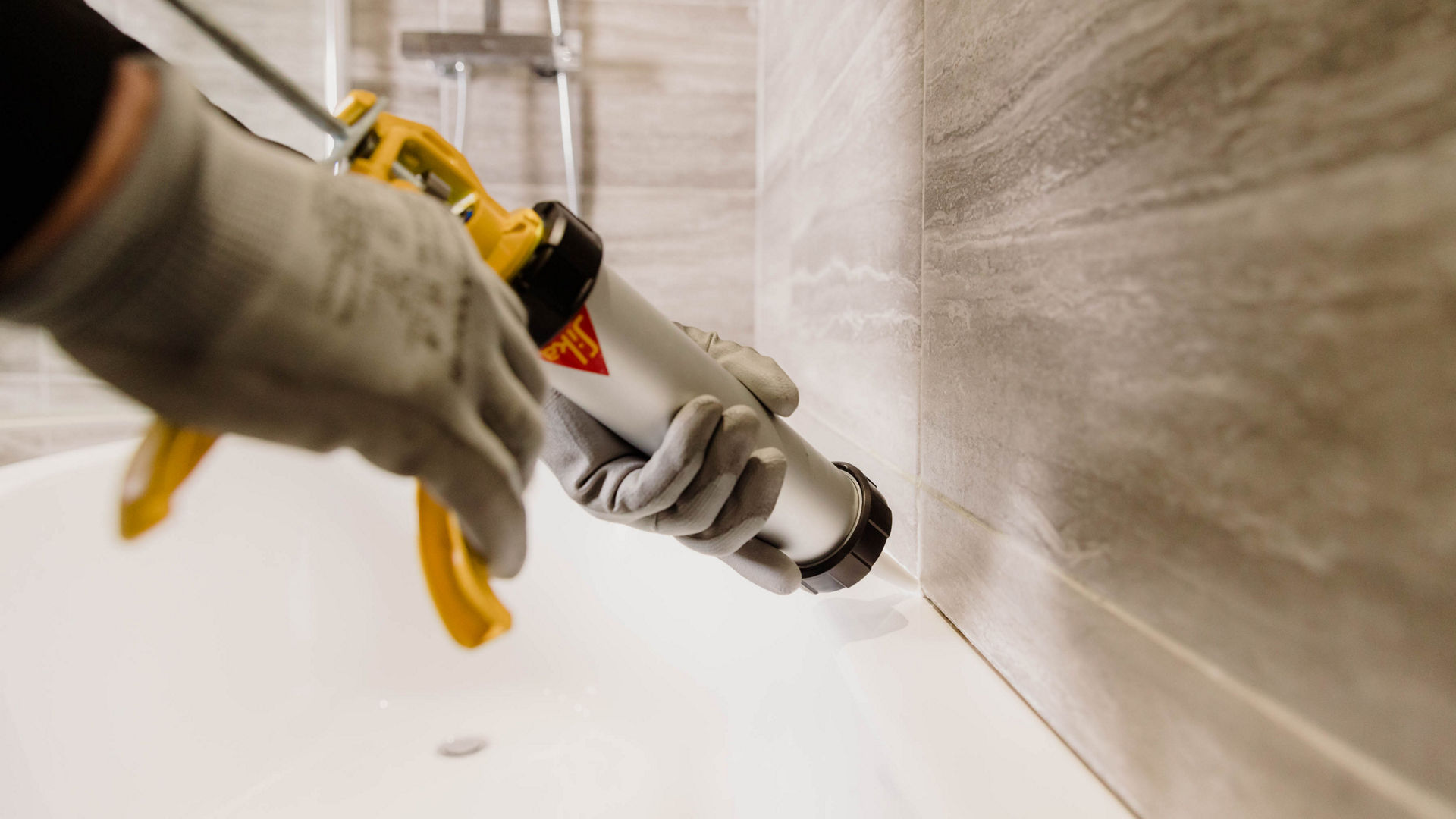Sika has over 110 years of history in construction. As the leading brand for professional applicators, we know that quality and performance are essential ingredients for sustainable business. The SikaSeal® construction sealant range consists of high-quality products that ensure reliable and durable solutions in your home. Durability is what makes our products sustainable, based on products that are performant, high quality and easy to apply. We are known for this and proud of it.
Important Properties of Sealants in Residential Construction
There are two basic requirements for sealants that are crucial for aesthetics and functionality:
First, sealants must be easy to work with, so that the quality of the seal is assured, and applicators can apply the products at high speed without rework.
Second, their properties, such as adhesion to substrates, movement capability, resilience, fungal resistance, etc., must match the specific requirements.
Designed for Key Applications
Sika places significant emphasis on application properties in the development of sealants. For instance, SikaSeal® sealants, designed for broad vertical facade joints, exhibit remarkable sag resistance and sufficient "body" for effortless smoothing. Another standout quality is the short thread break of SikaSeal® products, preventing contamination of adjacent surfaces.
Categories of Sealants Used in Housing Construction
Sealants for housing construction can be categorised as elastic and plastic sealants.
Elastic sealants can change their existing profile in the joint due to external influences and return to their original shape after the external force is removed (resilience). Elastic sealants can absorb significant joint movements with correct joint design and suitable movement capability without compromising the tightness of the joint. Typical examples of this group are moisture-curing silicones, polyurethanes or hybrids.
Plastic sealants lack resilience and are suitable for joints or cracks with minimal movement. Typical examples of plastic sealants are simple, water-based acrylates.
Benefits of Using SikaSeal® Construction Sealants
Easy Application
Longer Service Life
Less Impact
Applications
All-Purpose Including Sanitary
Glazing Sealing
Roof Repair
General Construction
Wet Rooms
Wall Repair
Field of Use
SikaSeal construction sealants offer a wide range of sealing solutions designed for various applications in residential construction. Window and door perimeter sealing, interior connection joints or waterproofing of joints in wet areas are some of the most common applications of SikaSeal® sealants. The product line includes silicones, water-based acrylates, and bituminous sealants, each tailored to specific needs.
Silicone sealants are widely used in facade applications and wet rooms. They are known for their durability, high UV and temperature resistance, and strong adhesion to many substrates. However, they cannot be painted.
A distinction can be made between acid crosslinking and neutral crosslinking silicone sealants:
- Acid: it releases gaseous acetic acid when cured with atmospheric moisture, which leads to the well-known vinegar odor during their application. These so-called acetoxy-curing silicone sealants have been on the market for more than 50 years and are still widely used today. They are not suitable for alkaline substrates such as concrete and sensitive metals because of the risk of rust formation.
- Neutral: the two main types of neutral silicone sealants are oxime-curing and alkoxy-curing. Oxime curing grades adhere excellently to many building substrates, but have a strong and penetrating odor that often prohibits their use indoors. Alkoxy-curing silicone sealants, on the other hand, have only a very faint or no odor at all during the curing process.
The SikaSeal® range features neutral silicones, specifically alkoxy ones, known for:
- No odor during curing, so it can withstand the highest classification regarding interior air quality
- Best compatibility with all building substrates, so it can be used on plastics prone to stress corrosion cracking, such as polycarbonate (PC) or polymethyl methacrylate (PMMA)
Main applications for silicones include sealing movement joints requiring resistance to temperature and mold growth, both in exterior and interior settings.
Also known as dispersion sealants, water-based acrylates are non-reactive and dry through water evaporation. Acrylic sealants exhibit high volume shrinkage and are used for narrow joints or cracks where little movement is expected.
Typical applications for water-based acrylates are connections between built-in furniture and walls and sealing plaster cracks before painting.
Bituminous sealants are cold-applied, ready-to-use solutions that immediately resist water. They provide excellent adhesion to various substrates, including damp surfaces.
Bituminous sealants are typically used for connection joints on roofing applications, sealing cracks on bituminous substrates, repairing roof felt.
Certificates
People spend more than 80% of their time indoors, in their homes, offices, retail, leisure, or education facilities. There are various governmental and industry initiatives around the globe to reduce VOC (Volatile Organic Compounds) emissions from building materials and improve indoor air quality. VOCs have been identified as having potential long-term health impacts and adverse environmental effects.
SikaSeal® construction sealants all have exceptionally low emissions, comply with the most stringent standards to ensure good indoor air quality, and reduce exposure.

